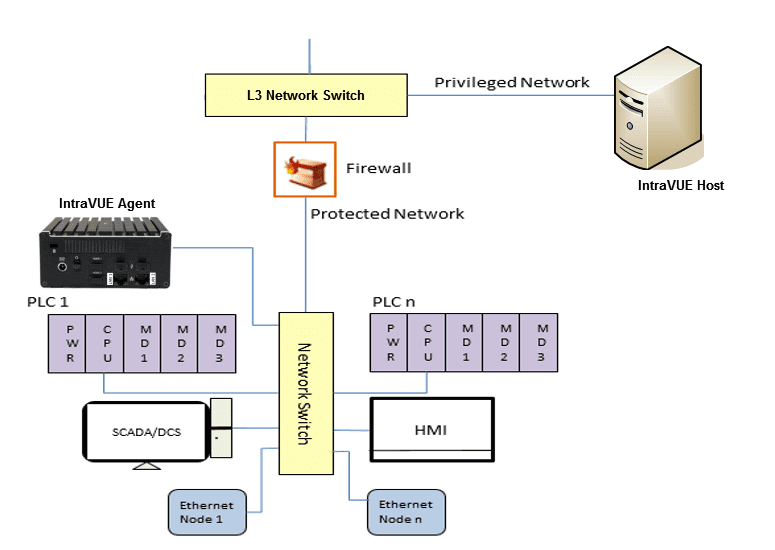Using the
The IntraVUE™ Appliance is used as a scanning Agent allowing IntraVUE™ to visualize and monitor IP devices not in the "local" plant network as theIntraVUE™ host.
This is the most common use of the IntraVUE appliance where it's simply configured with a static (or dynamic) IP address and allows the IntraVUE host to scan the edge devices on the private or isolated network and add them to the Map View as if they were in the local plant network. The IntraVUE agent does not require additional licensing.
The Scanner Agent was developed to handle several situations:
• to scan remote networks which do not have a router (e.g. VLANs).
• to scan remote, routed networks where IT will not provide the SNMP read-only community of the router,
• to scan multiple networks which utilize common IP addressing (i.e. the same IP addresses exist in each network) such as I/O or OEM Systems, or
• to acquire more accurate data from remote networks with long delays between IntraVUE and the devices (radio modems in mines),
![]() After obtaining an appliance in the available formats from below, see IntraVUE Appliance Configuration for exact steps on configuring an IntraVUE™ Appliance as an Agent or Server.
After obtaining an appliance in the available formats from below, see IntraVUE Appliance Configuration for exact steps on configuring an IntraVUE™ Appliance as an Agent or Server.
IntraVUE™ Appliance Formats
• A standard Panduit IntraVUE™OEM part (WNMS-APPL) with standard 15/20amp outlet. This is the de facto IntraVUE™ Appliance hardware for many years and it is still sold as a Panduit product. See the Panduit Catalog here for more info.
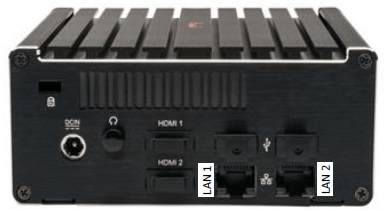
• An Industrial Raspberry Pi (RPI) Agent: It comes with all certifications required for industrial use. It can be powered using 24v current and can be din railed mounted onto a cabinet. It also comes with the standard 15/20 amp power outlet when purchasing a standard power cord (optional). This is a third-party part number that can be purchased from the third-party distributor here. It requires a Micro SD card (16GB) to load the IntraVUE™ Appliance Linux operating system that the Rasperry Pi motherboard will be using. See IntraVUE Agent - Low Cost Agent for configuration instructions and image download for this IntraVUE™ agent version.
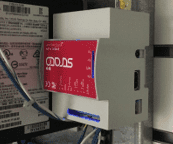
•A DYI version allows you to have the versatility and benefits of the RPI IntraVUE™ agent but it requires assembly and does not come with all of the industrial certifications of the Industrial RPI Agent. See IntraVUE Agent - Low Cost Agent for assembly instructions, how to obtain the parts, and loading the OS image and IntraVUE™ software.

•A IntraVUE™ Appliance OVF for VMWare: This is a pre-configured virtualized linux-based IntraVUE™ ready to be deployed on any plant or isolated network. Simply download and install the available OVF image from the OVF Image Download Page and deploy on your local machine or virtualized environment.
The Agent performs local scanning of an isolated network and provides the results to the IntraVUE host computer. The ping and threshold data will be as if the Intravue host computer was located in the isolated network.
• Two independent Ethernet connections
• Two USB connections (when using the hardware appliance)
• 9 to 40 VDC input power (when using the hardware appliance)
IntraVUE Agents are easily configured with the IntraVUE to provide a complete Industrial Ethernet monitoring solution. Some OEM systems such as packaging machines or bottling machines contain their own private Ethernet networks. These systems typically use the same IP addresses for each function in the system. When you have multiple systems using the same IP addresses it is impossible to monitor networks inside the systems with traditional networking tools. IntraVUE Agents allow these multiple networks to be monitored by a single IntraVUE package.
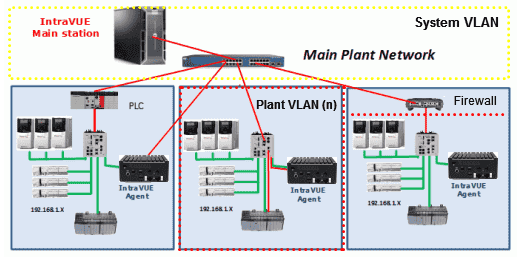
In the image above 3 different methods of connecting the IntraVUE Agent to the main IntraVUE workstation are shown.
PLC/DLR (Device Level Ring) Networks. The Agent is connected to a switch inside the 'system' using one port of the agent and the other port of the agent is connected to a switch on the 'plant' side.
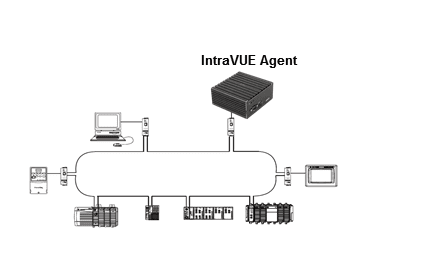
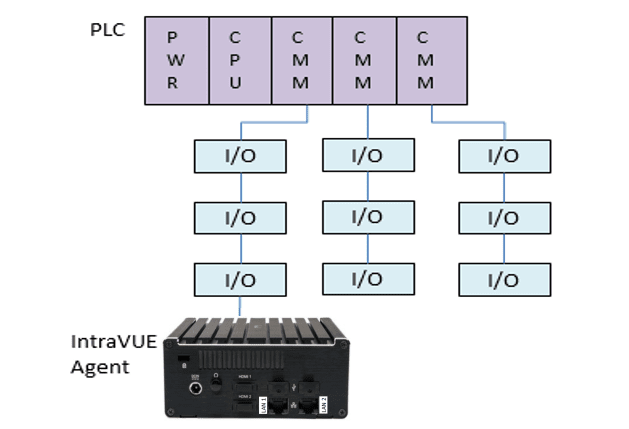
VLAN Access. A switch within the 'system' is configured with 2 VLANs. One is the "Plant" VLAN of the 'system' and the other is the "PLC" VLAN that provides access from the plant to the PLC of the 'system'. The IntraVUE Agent has one interface connected to the switch on the Plant VLAN and the other agent's Ethernet interface connects to the PLC VLAN port on the same switch.
Firewall Access. Firewall device blocks all the traffic packets except from an IP address on the 'enterprise side' to the IntraVUE agent on the 'plant' side of the Firewall.
